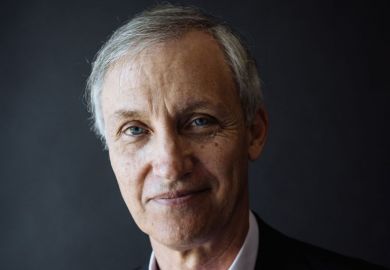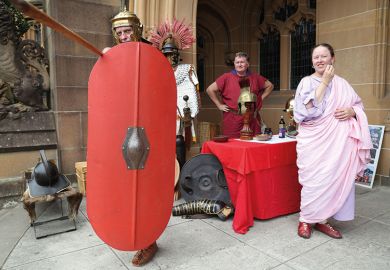Most university donors expect to have some influence on what their gift is spent on – but when does this cross the line into interference with academic autonomy? And are there some topics that are so controversial that they are in effect off-limits for philanthropic support?
Higher education fundraisers are asking these questions afresh after the Australian National University ended negotiations to offer liberal arts degrees subsidised by the Ramsay Centre for Western Civilisation, which was criticised by the National Tertiary Education Union for pursuing a “divisive cultural and political agenda”.
“[The centre] seeks to pursue a narrow, radically conservative programme to demonstrate and promulgate the alleged superiority of Western culture and civilisation,” NTEU branch president Matthew King had warned ANU vice-chancellor Brian Schmidt.
Revelations that the University of Sydney was in talks with Ramsay provoked a similar response from scores of its academics, who denounced the proposal as “European supremacism writ large”.
Nick Reimer, a senior lecturer in Sydney’s English department, accused the centre of giving “disproportionate prominence” to the “straight white upper-class men at the top of the social order”.
Simon Haines, chief executive of the Ramsay Centre, told Times Higher Education that, in hindsight, he was “naive” not to anticipate “active hostility” towards its plans to bankroll the new degrees. The Sydney-based centre, which is funded from the estate of the late health magnate Paul Ramsay, wants to funnel well over A$10 million (£5.7 million) a year into humanities study. On offer is support for up to 36 academic posts, 90 five-year undergraduate scholarships worth about A$25,000 a year, and 25 postgraduate scholarships worth about three times that much.
“I had hoped we could avoid this kind of ideological warfare, but obviously we can’t,” Professor Haines said.
Since it withdrew its participation, the ANU has in turn faced accusations that it was rejecting its Western roots by pandering to left-wing activism.
Professor Haines said that the centre was not a cheer squad for mainstream culture.
“Western civilisation is full of people who’ve been strongly critical of it,” he said. “Socrates was put to death for corrupting the youth by making them think philosophically about things the state wanted them to take for granted.”
But the fact that this is not the first case of its kind in Australia raises questions for universities about what they should accept funding for. In 2015, plans for a policy centre headed by Danish climate contrarian Bjørn Lomborg and funded by the federal government to the tune of A$4 million were scuttled when the University of Western Australia reneged on an agreement to host it.
Paul Johnson, who was then the UWA’s vice-chancellor, said that staff and student outcry had made the centre “untenable”, even though he supported its rationale and was happy to associate his university with Dr Lomborg.
The two proposals were championed by former prime minister Tony Abbott, widely considered an arch-conservative. But Professor Haines disputed descriptions of his centre as a right-wing thinktank.
An “indicative curriculum”, which was posted on Ramsay’s website, suggests that the degree’s students would scrutinise the works of luminaries from Homer, Sappho and Dante to Karl Marx, George Eliot and Aleksandr Solzhenitsyn, as well as great artworks and buildings from the Parthenon to Chartres Cathedral.
Professor Schmidt said that ANU’s decision had nothing to do with the merits of such a study focus. He said that the negotiations had been abandoned because Ramsay’s desire to influence curriculum and academic recruitment risked setting a precedent “that would completely undermine the integrity of the university”.
The ANU declined to elaborate on how its autonomy would have been compromised. A university document explaining the proposal, which the ANU has since removed from its website, acknowledges risks to academic independence but says that they would have been addressed through a “comprehensive legal agreement”.
Curriculum recommendations would have been made by a committee with equal numbers of academics from Ramsay and ANU, but “considered through the normal ANU academic processes”. And, while Ramsay would have had nominees on the committee who oversaw hiring decisions, the ANU would have nominated the majority and an ANU academic would have chaired it. Recruitment would have been conducted “in accordance with the normal hiring processes”.
Joanna Motion, a partner at London-based fundraising consultants More Partnership, said that it was inevitable that donors would have a degree of influence. A philanthropist supporting underprivileged students, for example, would have an implicit effect on admissions.
She said that an institution wondering where to draw the line should be guided by its statement of values. “If it puts academic freedom front and centre, that has to be reflected in the decisions it takes,” Ms Motion said.
“Clearly some things are off-limits, but philanthropy is extraordinarily important to universities – they should not find lots of excuses to avoid it.”
Register to continue
Why register?
- Registration is free and only takes a moment
- Once registered, you can read 3 articles a month
- Sign up for our newsletter
Subscribe
Or subscribe for unlimited access to:
- Unlimited access to news, views, insights & reviews
- Digital editions
- Digital access to THE’s university and college rankings analysis
Already registered or a current subscriber?









